
GUNA MD Collagen Injections for Musculoskeletal Pain Therapy
The COLLAGEN MEDICAL DEVICES product line consists of certified medical devices for treating musculoskeletal pain. Manufactured by the Italian company GUNA, which has over 20 years of experience in pharmaceutical research, these products utilize naturally occurring substances in physiological concentrations, combined with plant extracts and other natural components. The concept is to naturally regulate the body’s physiological functions where needed. This approach aligns with the innovative field of “Physiological Regulating Medicine,” which includes MD collagen injections.
MD collagen injections are designed to treat pain caused by various musculoskeletal and support system disorders. They alleviate pain, improve joint mobility, and slow down the physiological degeneration of joints and related tissues, targeting the designated area. They also mitigate damage from aging, improper posture, chronic conditions, injuries, and accidents. These injections contain collagen to combat connective tissue laxity and other natural components for effective collagen delivery to target tissues, addressing musculoskeletal pain comprehensively.
Benefits
● Effectiveness
● Safety
● Tolerability
● No allergic reactions
● Natural origin
● Suitable for all ages
● No risk of drug interactions
● Compatible with other treatments
The application is quick and minimally painful (subcutaneous, intradermal, intramuscular, or intra-articular injections). A course of 10 injections is ideal, but the specific protocol depends on the problem and the doctor’s recommendation.
Standard Protocol
● 1-2 vials 2–3 times per week during the first two weeks, based on severity and clinical condition.
● Subsequent weekly treatments until pain relief. Relief typically begins after the first to third treatment.
The laser has biostimulatory, analgesic (pain-relieving), and anti-inflammatory effects. The method is completely painless, safe, and cannot damage any tissue.
This is one of the most advanced methods of physical therapy for treating painful conditions of the musculoskeletal system. The laser beam is capable of penetrating up to 12 cm deep, thereby affecting tissue structures located deep beneath the skin. In the case of the robotic scanner, it is the first intelligent robotic system capable of covering body areas up to 1200 cm². Clinically effective and safe treatment parameters are individually tailored to each patient.
The laser beam can provide immediate, significant, and long-lasting pain relief. Noticeable improvement is often seen on the very first day of treatment. The laser has the ability to gently influence the cellular environment, target inflammatory processes, relax and regenerate muscles, and reduce pain.
We use the laser for joint and tissue regeneration as well as for supporting healing in post-traumatic conditions — this includes reducing inflammation, improving blood flow, decreasing swelling, and supporting the healing of post-surgical scars. Laser therapy should always be part of a comprehensive treatment plan.
Most Common Indications for High-Power Laser Therapy:
● Pain in the musculoskeletal system
● Muscle spasms and treatment of trigger points
● Tendon attachment pain (e.g. tennis and golfer’s elbow, knee pain, Achilles tendon, heel spurs, etc.)
● Shoulder joint pain
● Carpal tunnel syndrome
● Tinnitus (ringing in the ears)
● Osteoarthritis of large joints – both acute and chronic pain
● Post-traumatic conditions
● Arthritis and rheumatism
● Facial nerve palsy
● Scar therapy
Contraindications for Therapeutic Laser Treatment:
● Pregnancy (abdomen and lower back area)
● Pacemaker
● History of cancer
(does not apply to distant body parts after confirmed cancer remission)
● Thyroid disorders
● Seizure disorders (e.g. epilepsy, febrile seizures)
● Bleeding conditions, including during menstruation
(avoid application on the abdomen and lower back)

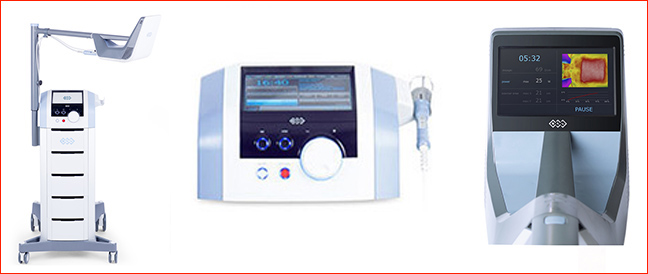
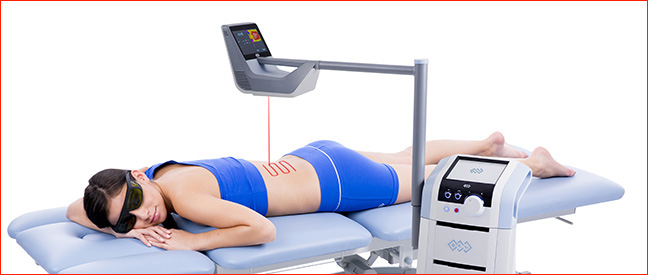
Ultrasound examination (sonography) is a traditional imaging method that is safe, painless, and gentle on the body, requiring no prior preparation, and having no side effects or absolute contraindications.We use sonography to evaluate the condition of soft tissues, joints, and peripheral nerves. Both static and dynamic examinations are performed on clinically important areas.This examination is essential for assessing pathological changes in the affected segment. Based on the findings and the timeline of the issue, we can propose appropriate and precisely targeted treatment or recommend lifestyle and activity adjustments.



Injections with medical gas (CO2) represent a therapeutic method used in rehabilitation treatment for painful musculoskeletal conditions. The gas is injected subcutaneously into painful areas around large joints and the spine. The gas is absorbed very quickly, so there is no risk of gas embolism. Gas injections relieve pain, improve blood circulation in the application area, and may accelerate wound healing. The application of gas injections is particularly suitable for those suffering from impaired limb circulation, ischemic heart diseases, or degenerative diseases of the joints and spine with painful syndromes.
Immediately after the injection, the patient feels a slight tingling sensation at the injection site, but after some time, a pleasant warmth spreads in the same area due to increased blood flow.
Indications:
● Back and spine pain
● Headaches and migraines
● Joint pain (arthritis, rheumatism)
● Muscle stiffness spreading to limbs/head
● Post-injury conditions
● Circulatory disorders (ischemia, post-heart attack)
Contraindications for INDAP:
● Inflammation of the skin, subcutaneous tissue, and veins at the intended injection site
● Hyperthyroidism
Relative contraindications:
● Varicose syndrome, bleeding disorders, and patient anxiety
Ludmila Mojžíšová (1932–1992) was an important Czech physiotherapist whose name is still associated with effective treatment of functional disorders of the musculoskeletal system and functional female infertility. Her experience working with athletes led her to develop her own method combining mobilization techniques and targeted exercises. Gradually, she discovered that her approach also produced significant results in women suffering from infertility. Under the name "Rehabilitation treatment of certain types of female infertility by the L. Mojžíšová method," this method was officially recognized in 1990 by the Czech Ministry of Health as a recommended procedure for treating functional female infertility. Its clinical effectiveness was verified in collaboration with gynecologist Prof. Evžen Čech.
This method involves reflex influence on the neuromuscular apparatus of the pelvic floor, i.e., by removing muscle imbalance in the pelvic area, its better blood circulation with additional positive effects is achieved. However, it does not treat the pelvis as a separate unit. Patients must be treated as a whole. Therefore, the method also focuses, among other things, on blockages of ribs, spine, pelvis, and coccyx, working with scars, etc. This relates to so-called vertebrovisceral relationships (spinal pain affects corresponding internal organs) and conversely viscerovertebral relationships (internal organ disorders propagate into the musculoskeletal system).
The method is not only intended for women suffering from functional infertility but is also applicable to men (blockage of the 7th rib influences spermogram values in men).
As in all approaches, emphasis is placed on patient individuality and new findings from medicine and physiotherapy. Modern sonographic devices are used to examine pelvic floor muscles during treatment.
Therapy usually lasts 6 months, includes several visits, and successful results require daily, regular exercises.
Most common indications for the Ludmila Mojžíšová method:
• functional infertility in women
• menstrual cycle disorders without organic cause (e.g., irregular cycle, prolonged menstruation, painful menstruation)
• conditions after childbirth or gynecological operations (e.g., cesarean section)
• pain during sexual intercourse
• incontinence
• painful coccyx (after falls on the coccyx, X-ray examination is necessary to exclude coccyx fracture)
• male infertility without organic cause (positive effect on spermogram)
• back pain, neck spine, head pain, joint blockages
• psychosomatic difficulties associated with tension in the pelvic area
• helps women during menopause
Contraindications:
• acute inflammatory and painful conditions
• unhealed coccyx fractures
• malignant conditions
The L. Mojžíšová method offers a natural and effective approach to solving problems of the musculoskeletal and reproductive systems.
If you are interested in therapy by the Ludmila Mojžíšová method, have questions, or are unsure if this method would be suitable for you, do not hesitate to ask our doctors or physiotherapists.
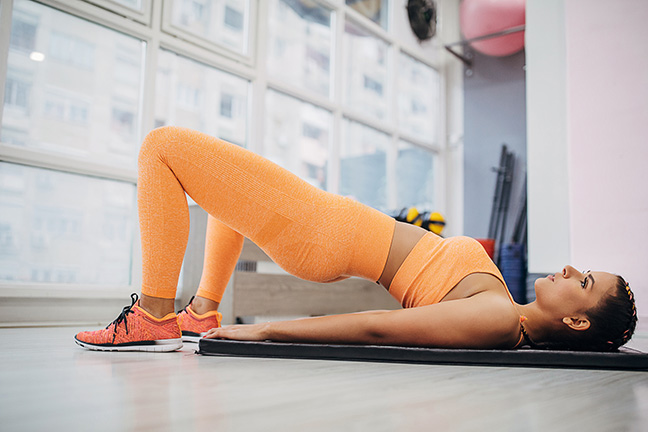
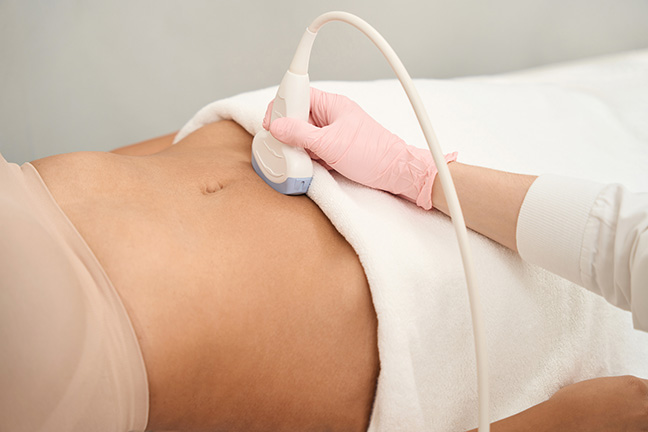

As part of individual therapy, we use the Redcord® suspension system at our facility, which helps restore proper muscle activity and improve the stability of the musculoskeletal system. The therapy is suitable for patients with both acute and chronic issues, as well as for athletes as a preventive and compensatory measure against unilateral strain.
What is Redcord®?
Redcord® is a therapeutic system that uses an unstable suspension environment. During exercise, it activates the deep stabilization system and restores muscle balance. Each movement is adapted to the patient’s current abilities—without overloading and without pain.
Suitable for patients with:
• back, neck, and shoulder pain
• post-injury and post-surgical conditions
• muscle imbalances and poor posture
• neurological disorders with coordination issues
• chronic overload or sedentary lifestyle
Benefits for athletes:
Redcord® is part of sports rehabilitation and active recovery. It helps:
• improve stability and movement control
• detect and correct muscle imbalances
• reduce the risk of injuries and overload
• speed up return to training after injury
Suitable for all performance levels – from recreational athletes to professionals.
Contraindications:
Although Redcord® is safe and gentle, there are conditions where the exercise is not appropriate:
• acute infectious disease
• unstable cardiovascular condition
• severe balance and consciousness disorders
• fresh postoperative conditions without medical approval
• acute pain of unclear origin
• severe osteoporosis (fracture risk)
• post-stroke condition with acute neurological deficit
If unsure, we always recommend consulting a doctor or physiotherapist before starting therapy.
We use Redcord® as part of comprehensive rehabilitation. The therapy is led by an experienced physiotherapist who adjusts the treatment exactly to the client’s needs and current condition.
Want to book a Redcord® session? Contact us here: https://www.kykomed.cz/eng/kontakty.php
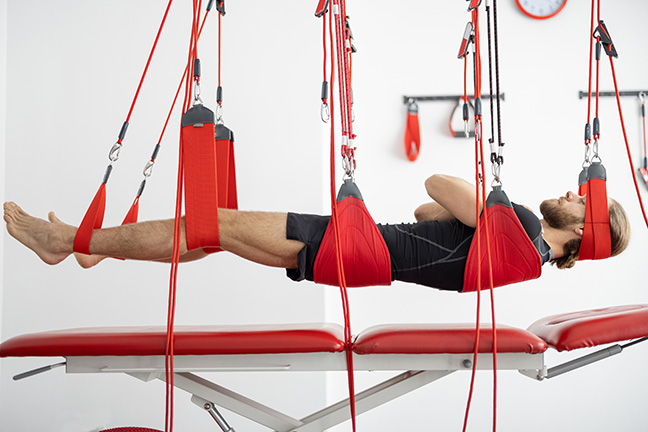

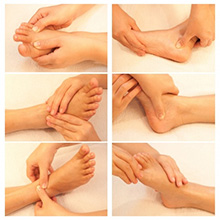
By stimulating reflex points on the feet, this ancient technique promotes energy flow, relaxation, and activation of self-healing processes, targeting weakened organs and reducing physical/mental tension.
Healthy back rehabilitation program is an individual exercise plan focused on
improving the function of the musculoskeletal system. It is recommended after completing
individual rehabilitation as follow-up care, but also as a preventive measure against pain and
muscle imbalances, for example due to sedentary jobs.
The goal of the exercises is to strengthen the deep stabilization system, improve mobility,
coordination, and overall physical stability.
Indications for Healthy Backs:
● for patients after completing individual rehabilitation
● for children and adults with scoliosis or poor posture
● for people with sedentary jobs and back pain
● for active athletes as injury and overload prevention
Benefits:
● tailored exercise plan
● training proper activation of the deep stabilization system
● improved coordination, mobility, and posture
● prevention of relapse or development of new issues
For athletic patients:
● customized exercise set according to sport type and intensity
● long-term compensatory plan for injury prevention
● movement therapy during return to sport after injury
Contraindications:
● infectious diseases
● acute post-injury conditions
● any other medical contraindications specified by a physician

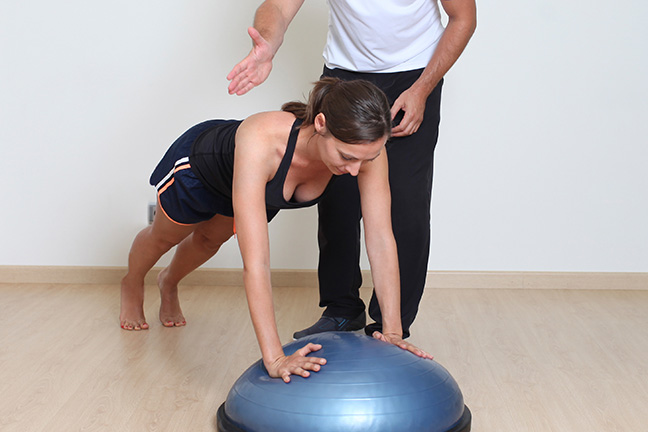

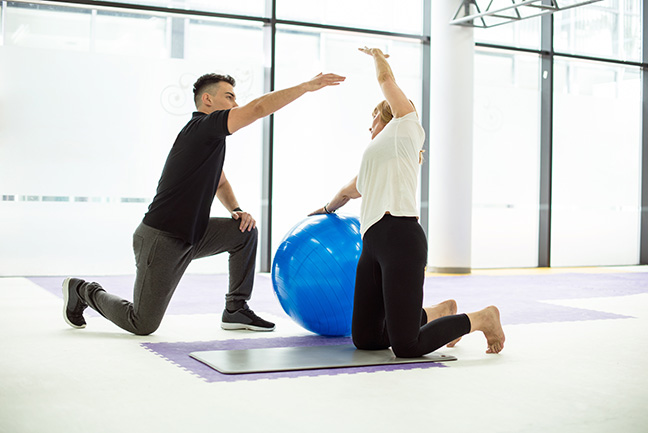
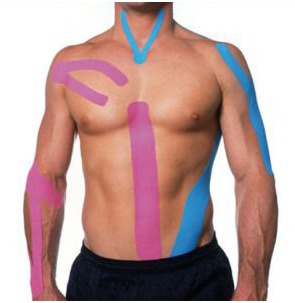
Kinesiotaping (kinesiological taping) is a revolutionary and highly sought-after technique in regeneration and rehabilitation. Unlike rigid fixation tapes, kinesiotaping gently and subtly enhances healing and recovery processes. It extends the relaxing effects of massages by targeting problematic areas of the muscular and skeletal systems. Today’s sports world cannot do without kinesiotaping. The method was developed in Japan in the late 20th century by Dr. Kenzo Kase. Over the following years, kinesiotaping spread around the world.
Currently, kinesiotaping is used as:
● Muscle Technique: Elastic tapes, with stretch properties similar to human skin, are applied to wrinkle the skin, increasing blood and lymphatic flow. This prolongs muscle relaxation, supports lymphatic drainage and massage effects, and activates the body’s healing processes.
● Ligament Technique: Stabilizes ligaments, spinal transitions, acupuncture points, and trigger points.
● Fascial Technique: Normalizes muscle tension.
● Lymphatic Technique: Prevents recurrence of lymphedema. By increasing lymph flow, it helps remove toxins from surface tissues.
● Scar Correction: Stretching the edges or area of a scar helps release it from the subcutaneous tissue and reduce keloid scars.
● Mechanical Correction Technique: By unloading, we improve the position of muscles, joints, and bones after injuries or during sports activities. For example, taping the shoulder joint in tennis can significantly enhance functionality, mobility, and relieve acute or chronic pain.
Advantages include simple application, speed, and immediate therapeutic effects
Uses of Kinesiotaping:
● For back, joint, tendon, and muscle pain
● During sports activities
● To prolong the effects of massage
● To correct poor posture
● To stabilize released joint blockages
● To activate healing processes
● To improve blood flow
● To help with carpal tunnel syndrome and overuse of hand extensors
● After injuries, during convalescence, and rehabilitation
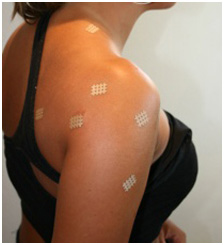
Cross tapes are based on the principles of acupuncture and help treat painful points to restore physical balance. The tapes are made from polyester and polyurethane and have a grid-like shape. The adhesive is gentle on the skin. Cross tapes are applied to so-called trigger points. They can help resolve not only muscular issues but also vascular problems. The tape uses hypoallergenic glue, contains no latex, and is water-resistant.
Possible uses:
● Swelling after acute injuries
● Swelling and limited movement after arthroscopies
● Muscle strains
● Chronic neck pain
● Painful shoulder syndrome
● Pain in the rotator cuff area
● Lumbago and thoracic spine pain
● Heel spurs and foot alignment issues
● Tendon sheath inflammation
● Poor posture
● Prevention before athletic exertion
• Manual
Lymphatic massage is a very gentle massage technique performed with slow and delicate movements on the skin. Using precisely defined techniques, lymph is directed to the collecting lymph nodes, from where it is transferred along with toxins into the central lymphatic system. From there, it enters the bloodstream and is eventually removed from the body via the kidneys and urine.
• Mechanical (Device-Assisted)
Apparatus-based lymphatic drainage is based on intermittent compression of the limb, creating a pressure wave that supports both the lymphatic and venous systems.
Effects: Detoxification (removal of toxins from the body), Metabolism support, Prevention of swelling and varicose veins, Drainage of swelling after injuries, Relief from tired or heavy legs, Reduction and prevention of cellulite, Slowing down the aging process
Mechanical lymphatic drainage works by applying rhythmic pressure, encouraging lymphatic and venous circulation.
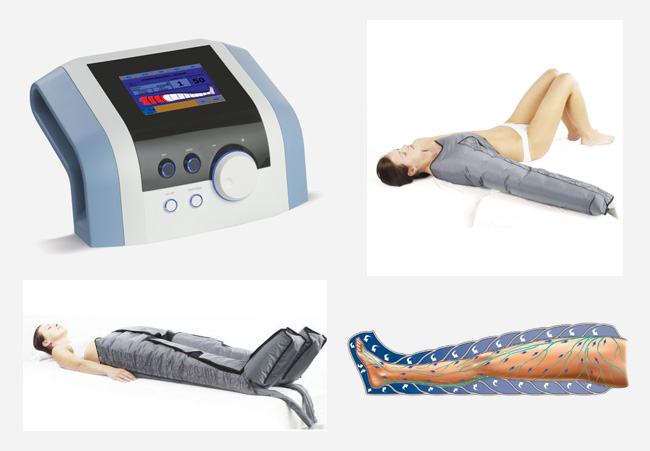
A podoscope is a diagnostic device used to assess orthopedic conditions of the feet. It allows for a detailed evaluation of the weight-bearing areas of the foot. This examination helps to detect abnormalities in the small joints of the foot, as well as in the positioning, pressure, and rotation of the heel bones and the relative alignment of various foot segments.
It assists in evaluating the longitudinal and transverse arches of the feet and identifying their disorders, most commonly seen in flat feet. The podoscope consists of a glass platform with an angled mirror underneath.
The patient stands on the glass plate, and the mirror displays the distribution of pressure across different parts of the feet and helps identify other potential causes of problems. The device allows us to observe the static posture of the feet, detect disproportions or asymmetries between the left and right foot, and compare the condition of the feet with the alignment of the entire musculoskeletal system, including the pelvic bones and shoulders.
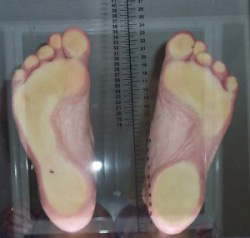
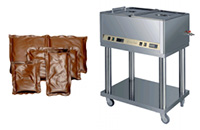
Peat heat carriers are special pads filled with a peat mixture and heated in a water bath.
The application of heat leads to warming, increased blood circulation, and relaxation of muscle structures, as well as acceleration of metabolism.
Using a peat heat carrier is suitable before manual therapy.
It is applied in cases of joint and spine pain, osteoarthritis, muscle contractures, and chronic rheumatic conditions.
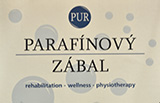
• Paraffin Wraps
Paraffin has both therapeutic and cosmetic effects. It warms tissues and relaxes muscles.
The use of paraffin is a form of positive thermotherapy—treatment with heat. Paraffin can be applied in two ways:
a) Single-use paraffin compress
b) Paraffin bath – involves dipping hands into a paraffin bath where paraffin is mixed with paraffin oil at about 55°C.
Indications and effects of paraffin on the human body:
Due to its thermal effects, paraffin is mainly used for chronic rheumatic diseases, particularly in the small joints of the limbs, and often in various vertebrogenic conditions (diseases of the spine and related structures).
Paraffin can also be used for regeneration—pre-warming before a massage chosen by the physiotherapist.
In rehabilitation, the effects of paraffin are thermal. Heating the body loosens subcutaneous layers, improves blood circulation in the skin, and enhances the absorption of minerals contained in paraffin. During application, muscles and joints relax, reducing pain in problem areas. Paraffin wraps also benefit the nervous system, leaving clients feeling relaxed and calm. Last but not least, it positively affects mental well-being.
Rigid taping uses non-elastic tapes to stabilize (fix) joints, similar to orthoses. It is used to tape overused joints or joints that have healed after injury.
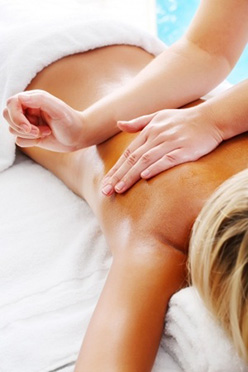
Classical massage is considered an effective method for fighting stress and tension.
It is ideal for muscle relaxation, general fatigue, and overexertion of the body.